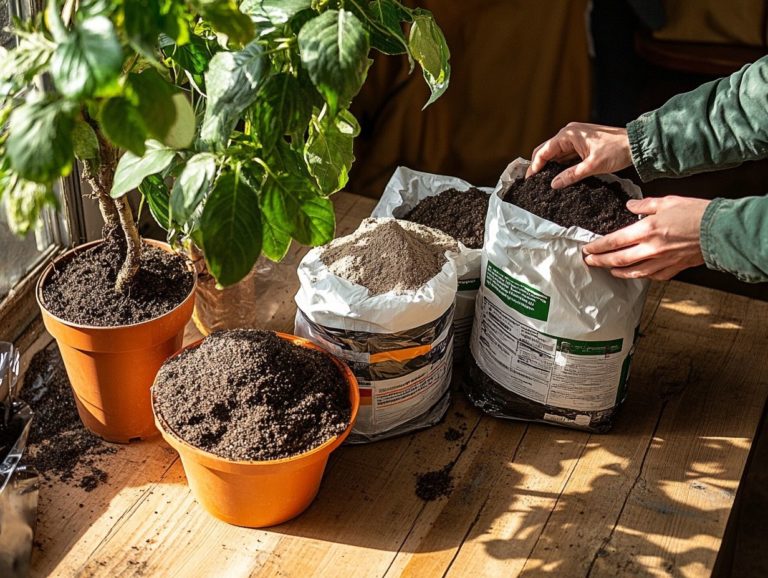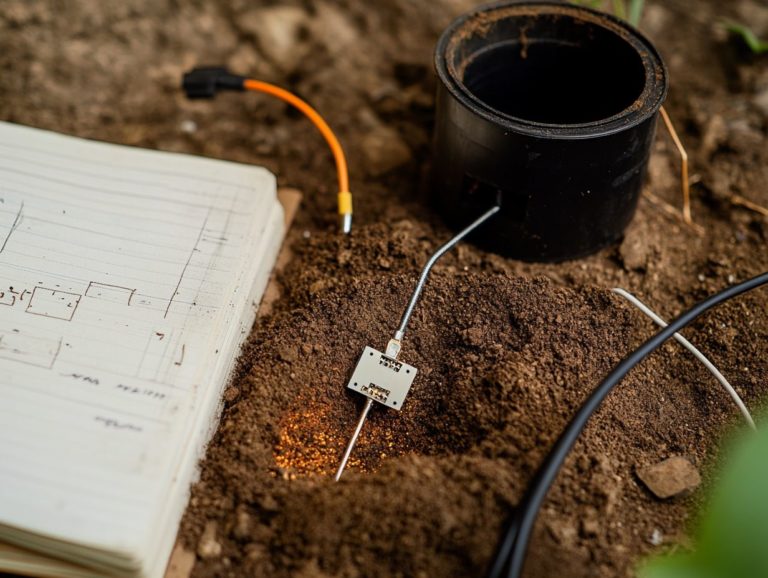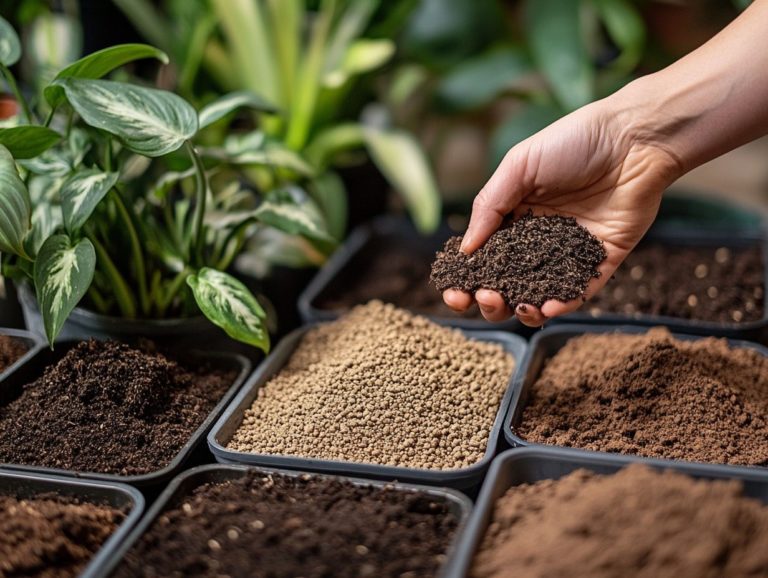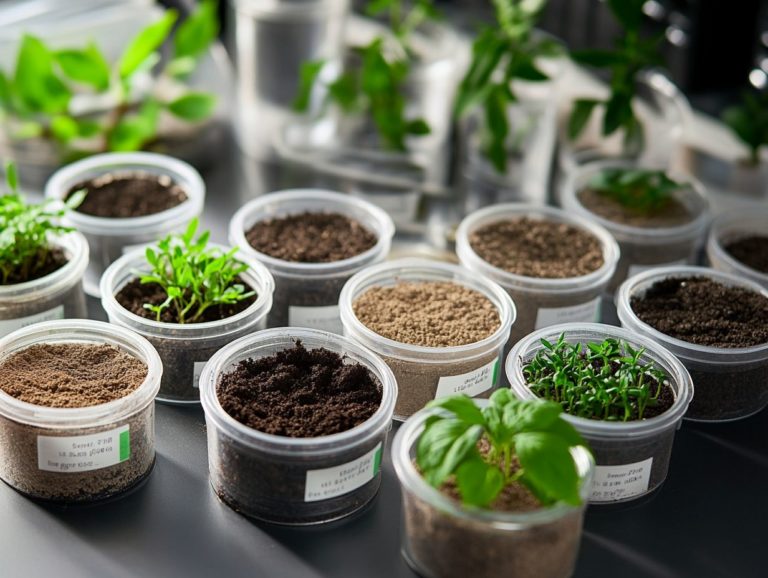How to Buy Quality Potting Soil
Choosing the right potting soil can make or break your garden. Let s explore how to select the best soil to help your plants thrive.
Quality potting soil does more than just hold your plants; it supplies essential nutrients and ensures proper drainage. This creates an optimal environment for growth.
This guide delves into the importance of selecting the appropriate soil, highlights the key ingredients to seek, outlines the various types available, and offers valuable tips for evaluating and purchasing the best potting soil tailored to your needs.
Start giving your plants the strong foundation they need today!
Contents
- Key Takeaways:
- Understanding the Importance of Quality Potting Soil
- What to Look for in Potting Soil
- Types of Potting Soil
- How to Assess Potting Soil Quality
- Tips for Buying Quality Potting Soil
- Frequently Asked Questions
- What should I look for when buying quality potting soil?
- How important is the pH level in potting soil?
- What is the difference between potting soil and potting mix?
- Can I make my own potting soil?
- Is it necessary to buy different types of potting soil for different plants, like commercial products and specialty blends?
- How can I tell if a potting soil is of good quality, and what should I look for in eco-friendly alternatives?
Key Takeaways:
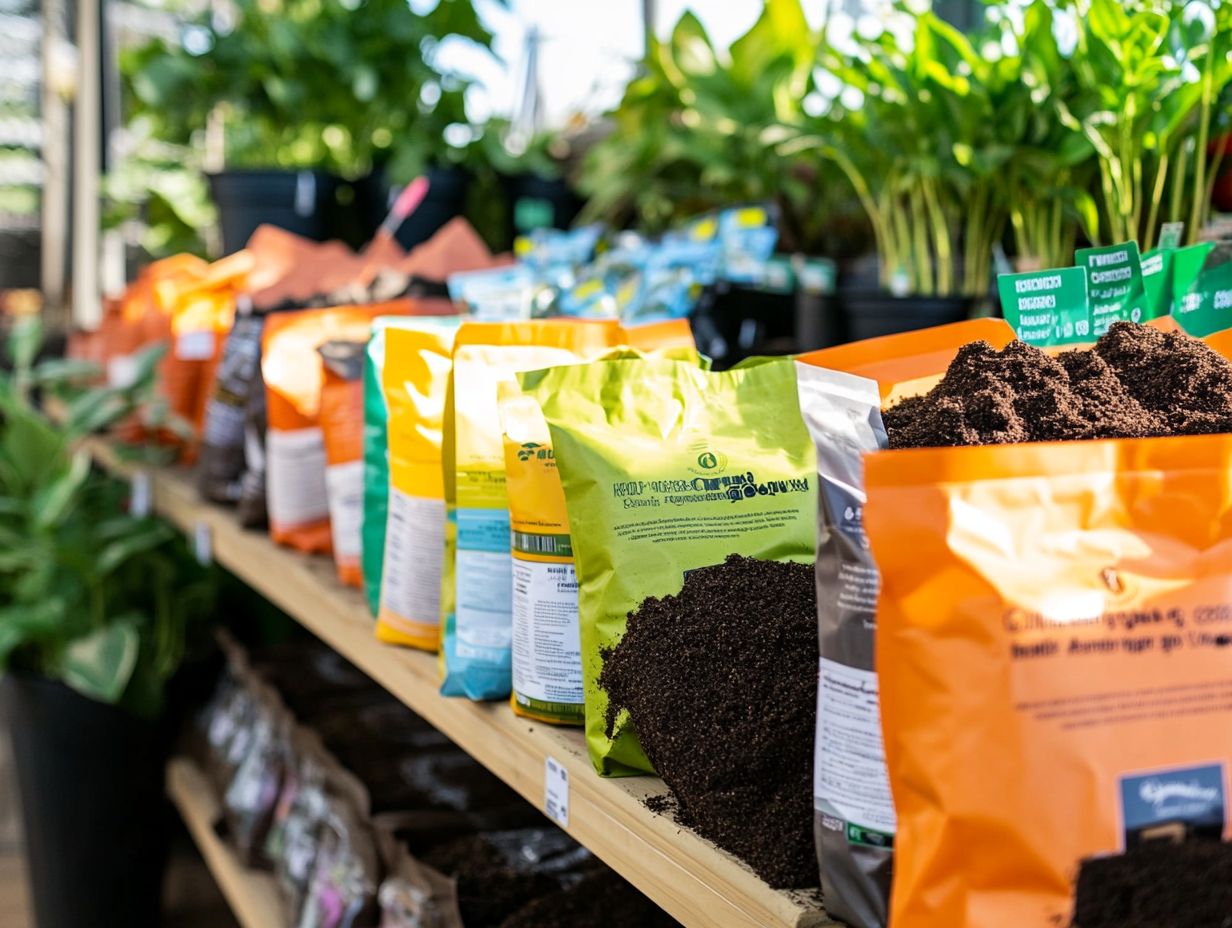
- Quality potting soil is crucial for the growth of healthy and thriving plants.
- When purchasing potting soil, pay attention to key ingredients and nutrients such as perlite, vermiculite, and compost.
- Consider factors like texture, moisture retention, and pH levels when assessing the quality of potting soil.
Understanding the Importance of Quality Potting Soil
Quality potting soil is crucial for your gardening success, especially when it comes to growing healthy plants and vibrant seedlings.
A balanced mix of organic soil is essential. Additives like peat moss, decomposed wood, and perlite can enhance moisture retention and nutrients, which are important for healthy plants.
While many commercial products boast these benefits, grasping the significance of high-quality potting soil is essential for anyone aiming to create a flourishing environment for their plants, whether they’re nestled in outdoor containers or thriving in hydroponic systems (growing plants without soil). For those interested in DIY solutions, learning how to mix your own potting soil can be incredibly beneficial.
Why Quality Matters for Plant Growth
The quality of potting soil directly impacts the health and growth rate of your plants. It provides essential nutrients and ensures proper moisture retention, both critical for sustaining life.
Using premium potting soil guarantees that key elements like nitrogen, phosphorus, and potassium are readily available. This fosters robust root development and lush foliage.
Take tomatoes and peppers, for example; they truly thrive when planted in soil rich in organic matter, which also enhances drainage.
Using inferior products can lead to a lack of vital nutrients, resulting in stunted growth and increased vulnerability to diseases. High-quality soil improves moisture retention, which is crucial for your plants’ survival during hotter months. This minimizes the need for constant watering.
Plants like orchids and ferns particularly shine in this environment, flourishing where moisture is effectively managed.
What to Look for in Potting Soil
When you re choosing the perfect potting soil for your gardening endeavors, it s essential to seek out specific ingredients and nutrients that will foster optimal growth for your plants, whether they are houseplants, vegetables, or container arrangements for your outdoor spaces.
Key Ingredients and Nutrients to Consider
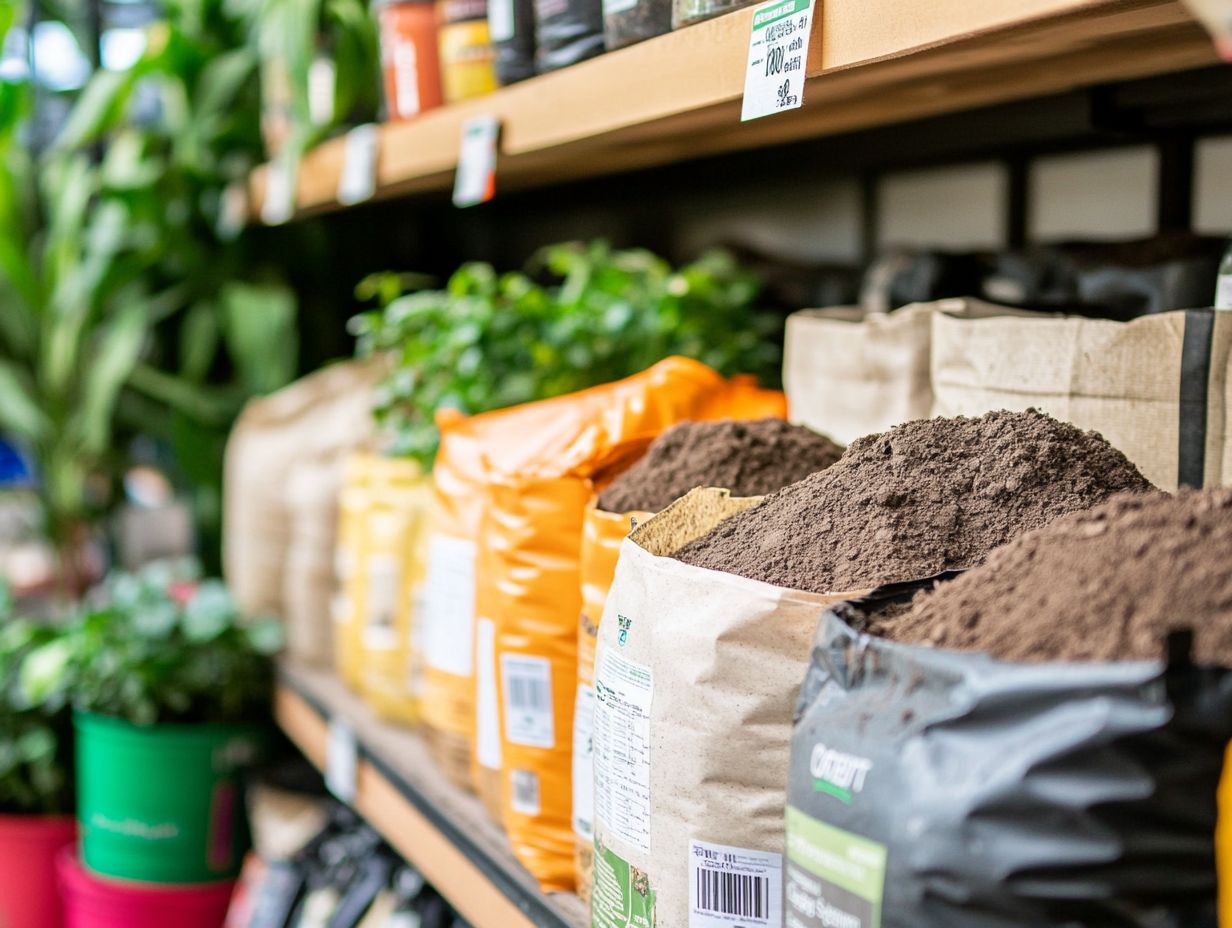
When selecting high-quality potting soil, consider essential ingredients and nutrients such as peat moss for moisture retention, perlite for aeration, and coir as a sustainable alternative.
These elements work together seamlessly to create a thriving environment for your plant roots.
Peat moss excels at retaining water while enriching the soil with organic matter, enhancing the availability of nutrients. Perlite improves drainage, preventing waterlogging and fostering healthy root development. Coir, sourced from coconut husks, offers excellent moisture control without compromising sustainability.
By incorporating organic matter like earthworm castings, you enhance soil structure. This creates a rich habitat for beneficial microbial fungi, which play a vital role in breaking down nutrients and ensuring they remain accessible to your plants over time. This, in turn, supports robust growth and vitality.
Types of Potting Soil
You ll find a diverse array of potting soils on the market, each crafted to cater to specific gardening needs.
Among these are specialty blends tailored for various plants, including well-known brands like Miracle-Gro, Happy Frog, ProMix, and Black Potting Soil. Each type offers unique benefits to ensure your plants receive optimal care.
Different Varieties and Their Uses
Potting soils have specific uses. For a vegetable garden, choose a nutrient-rich mix for growing lettuce, arugula, or spinach.
If you re caring for succulents, select a blend that s well-draining to prevent root rot. For container gardening, a lightweight mix with coconut coir enhances aeration and water retention, essential for thriving potted herbs.
If orchids are your passion, seek out a robust soil with bark or moss to provide proper airflow around the roots.
Understanding the characteristics of each type of soil helps you cultivate ecosystems that promote plant health and productivity, leading to flourishing gardens.
How to Assess Potting Soil Quality
To assess potting soil quality, evaluate its texture, moisture content, and nutrient mix. This ensures it aligns with your plants’ needs, whether for houseplants or starting a vegetable garden.
Choosing the right soil can make all the difference in cultivating a thriving green space.
Factors to Consider when Buying
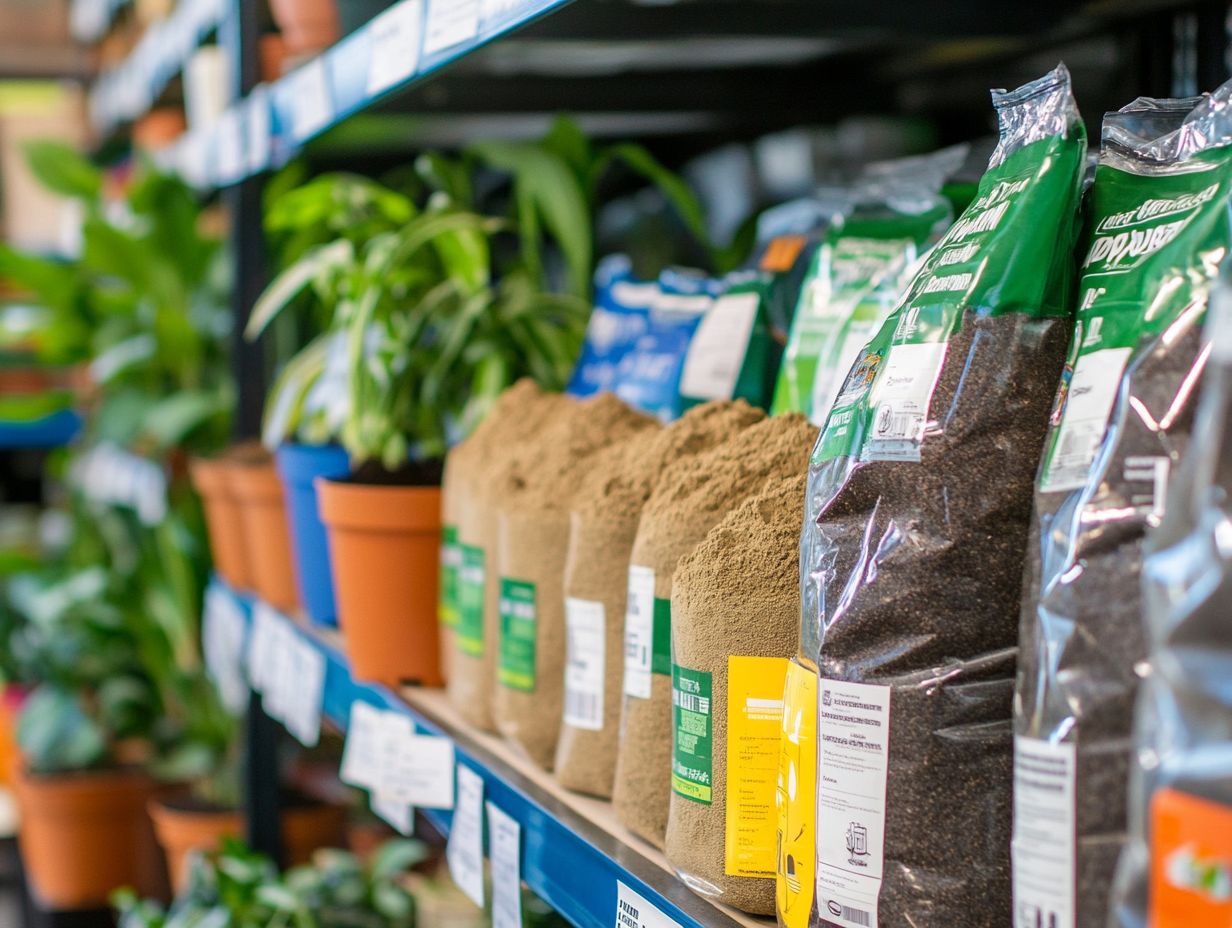
When buying potting soil, consider several key factors, including the quality of the ingredients, the intended use, and your budget.
Understanding the ingredient list is crucial as it reveals the nutrient composition and highlights any additives that could impact growth. Soil requirements can vary greatly based on whether you re container gardening or starting seeds, leading to many options at different price points.
High-quality ingredients may cost more, but a wise investment can yield superior results, proving the right blend is worth its weight in gold.
Tips for Buying Quality Potting Soil
Follow these tips to find quality potting soil. Focus on purchasing from reputable brands and local garden centers that emphasize soil quality and sustainability.
This approach guarantees a superior product while supporting environmentally responsible practices.
Where to Buy and What to Ask
Local gardening stores and trusted online retailers are great places to buy potting soil. Ask the right questions about the quality and ingredients of the soil you re considering.
Inquire about the components in the potting soil, such as organic matter, peat, and perlite (a lightweight volcanic glass that improves drainage). Knowing where these materials come from can provide valuable insights.
Quality assurance is essential ask vendors if they perform lab tests to ensure the absence of harmful chemicals or pathogens. Supporting local businesses strengthens community ties and reduces the carbon footprint associated with transporting goods long distances. This way, you can cultivate a garden that aligns with your eco-friendly values.
Frequently Asked Questions
What type of potting soil is best for vegetables?
Nutrient-rich soil is ideal for growing vegetables.
Can I use regular garden soil for potted plants?
It’s best to use potting soil, as garden soil may not provide the right drainage.
How often should I replace potting soil?
Replace it every 1-2 years or when the soil appears compacted or depleted.
What should I look for when buying quality potting soil?

When buying quality potting soil, look for a mixture that contains organic matter, such as compost or peat moss. It should also include perlite or vermiculite for moisture retention and be free of weeds, insects, and diseases.
How important is the pH level in potting soil?
The pH level shows how acidic or basic the soil is. Most plants do well in slightly acidic soil, ideally between 6.0 and 7.0.
What is the difference between potting soil and potting mix?
Potting soil contains organic matter and other materials. Potting mix combines various materials without organic content.
Potting soil is better for nutrient-rich plants, while potting mix is suitable for plants that require a well-draining medium.
Can I make my own potting soil?
You can easily create your own potting soil! Just mix equal parts of compost, peat moss, and perlite or vermiculite.
You can also add materials like sand, coconut coir, or shredded bark to create a suitable mix for your plants.
Is it necessary to buy different types of potting soil for different plants, like commercial products and specialty blends?
Yes, different plants have varying nutrient and moisture requirements. It is best to use specific potting soils for each type of plant.
Cacti and succulents need a well-draining mix, while ferns and tropical plants prefer a more moisture-retaining soil.
How can I tell if a potting soil is of good quality, and what should I look for in eco-friendly alternatives?
To check if potting soil is high quality, feel its texture and look for weeds or pests. A top-notch mix feels light and airy, with no unwanted materials.
Check the list of ingredients on the package for a balanced blend of organic matter and other additives.
Try your hand at mixing your own potting soil and watch your plants thrive!

